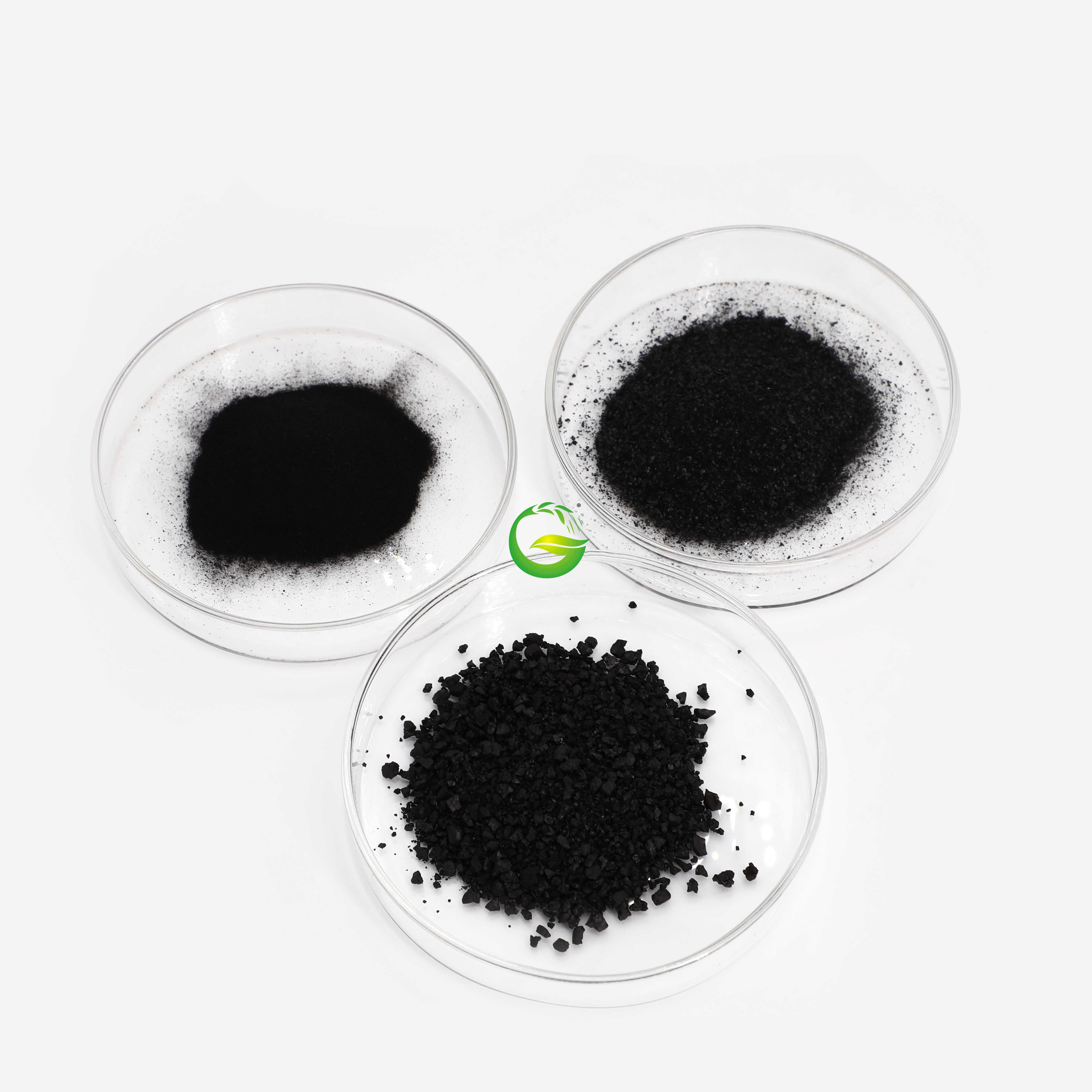Phoenix Plaza, No.161 Changjiang West Road,E&T.D.Zone,Qingdao,Shandong, P.R.China
86-532-84461352
2020/12/30 09:38:38
Humic acid is a macromolecular organic compound composed of carbon, hydrogen, oxygen, nitrogen, sulfur, and a small amount of phosphorus. It is a polymer of acidic substances containing multiple functional groups. Humic acid (mineral source) is a kind of macromolecular organic acid that is decomposed and transformed by the remains of animals and plants and accumulated under the chemical action of nature. It can help plants absorb nutrients, speed up growth, improve crop quality, increase yield, and regulate production. In the process, the relationship between the various elements of the soil plants and the increase of resistance are of value to agricultural production that cannot be ignored. Let's get to know it together!

1. Humic acid is a binder for soil and gravel
Someone did an experiment and found that if there are only fine sand and water in the soil, then the sand is easy to disintegrate. At this time, everyone understands that humic acid turns out to be a binder for soil and gravel, allowing the soil to support crop growth. This example is very simple. It’s easy to get stuck in the sandpit when walking in the desert, but it’s hard to get stuck when walking in your farmland.
2. Humic acid is a water retaining agent for the soil
Others have found that if water is added to the sand, the water will evaporate quickly when the temperature is high; if too much water is added to the sand, the water will run away quickly, but humic acid is added to the sand and water , Then the water not only evaporates slowly, and even some water molecules that are deeply compatible with humic acid are also very difficult to lose; and after adding humic acid, the amount of water absorbed is greater, and the water is not easily lost, so humic acid is a water retaining agent for the soil .
3. The chelating ability of humic acid
With the advancement of technology, people's understanding of humic acid is getting deeper and deeper. Studies have found that humic acid is a very philanthropic guy. It has a strong chelating ability to almost all the nutrients needed for plant growth, and it has a strong possessive desire. For example, there are a lot of carbonate ions in the soil. The calcium ions needed for plant growth are very popular. If they are accidentally linked with carbonate ions to form calcium carbonate, which is marble, you cannot expect plants to absorb marble to supplement it. Calcium element, so calcium ions can't be absorbed, which is quite depressing.
4. Humic acid is an activator and fertilizer preservation agent
But with humic acid, it is different. It will hold calcium ions firmly in its arms and prevent it from contacting carbonate ions, so that calcium ions will not be fixed. Therefore, humic acid is an activator and fertilizer-preserving agent of soil mineral elements. Because of the presence of active hydrogen on the acidic active group of humic acid, it is weakly acidic and can decompose the solidified mineral elements in the soil. Humic acid forms complex ions with metal ions such as manganese, iron, zinc and copper in the soil, which can be absorbed by plant roots, thereby activating trace elements.
5. Humic acid is a buffer for soil pH
Now everyone uses excessive chemical fertilizers, and the soil is either acidified or salinized. Acid needs to be neutralized by alkali, and alkali needs to be adjusted by acid. In chemical experiments, there is a class of substances called "pH buffers". The buffers have both acidic properties and alkali properties. The molecule in humic acid contains both basic and acidic groups. Therefore, humic acid is a buffer for soil pH.

The above is only a part of the effects of humic acid on the soil. In fact, in addition to these, humic acid has the following effects:
Humic acid can increase ground temperature, reduce electrical conductivity (that is, compressed salt), improve the structure of pellets, and provide microbial carbon sources.
Humic acid can improve the biochemical activity of crops, accelerate the growth of crop roots, and increase the number and length of roots.
Humic acid can reduce the impact of external adverse factors on crops and improve crop resistance by adjusting the growth environment and external form of crops.
In arid environment, humic acid can interfere with the gene expression and enzyme activity of crops from inside the cell, and improve the drought resistance of crops. In saline soil, humic acid can increase plant chlorophyll expression level and improve resistance.
In different growth stages of crops, humic acid will produce corresponding regulating functions, provide richer nutrient supply for the growth of crops, increase yield, and regulate the activity of enzymes and microorganisms in the soil.